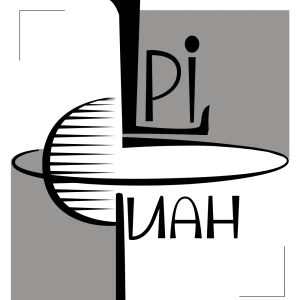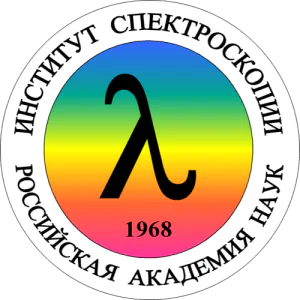Mechanisms of Thermal Quenching of Defect‐Related Luminescence in Semiconductors
Publication type: Journal Article
Publication date: 2020-06-22
scimago Q2
wos Q3
SJR: 0.416
CiteScore: 3.6
Impact factor: 1.9
ISSN: 18626300, 18626319
Materials Chemistry
Surfaces, Coatings and Films
Electronic, Optical and Magnetic Materials
Condensed Matter Physics
Electrical and Electronic Engineering
Surfaces and Interfaces
Abstract
The intensity of defect-related photoluminescence (PL) in semiconductors changes with temperature, and it usually decreases exponentially above some critical temperature, a process called the PL quenching. Herein, main mechanisms of PL quenching are reviewed. Most examples are given for defects in GaN as the most studied modern semiconductor, which has important applications in technology. Peculiarities of defect-related PL in I–VII, II–VI, and III–V compounds are also reviewed. Three basic mechanisms of PL quenching are distinguished. Most examples of PL quenching can be explained by the Schön–Klasens mechanism, whereas very few or even no confirmed cases can be found in support of the Seitz–Mott mechanism. Third mechanism, the abrupt and tunable quenching, is common for high-resistivity semiconductors. Temperature dependence of capture coefficients and a number of other reasons may affect the temperature dependence of PL intensity. The “negative quenching” or a significant rise in PL intensity with temperature is explained by a competition between recombination channels for minority carriers.
Found
Nothing found, try to update filter.
Found
Nothing found, try to update filter.
Top-30
Journals
|
1
2
3
4
5
6
7
8
|
|
|
Journal of Applied Physics
8 publications, 13.11%
|
|
|
Physical Review B
4 publications, 6.56%
|
|
|
Physica Status Solidi (B): Basic Research
4 publications, 6.56%
|
|
|
Journal of Materials Chemistry C
4 publications, 6.56%
|
|
|
Journal of Physical Chemistry C
3 publications, 4.92%
|
|
|
Journal of Luminescence
2 publications, 3.28%
|
|
|
Advanced Optical Materials
2 publications, 3.28%
|
|
|
Nanoscale
2 publications, 3.28%
|
|
|
Advanced Functional Materials
2 publications, 3.28%
|
|
|
ChemPhysChem
2 publications, 3.28%
|
|
|
Journal of Materials Science: Materials in Electronics
2 publications, 3.28%
|
|
|
AIP Advances
1 publication, 1.64%
|
|
|
Applied Physics Letters
1 publication, 1.64%
|
|
|
Ceramics International
1 publication, 1.64%
|
|
|
Optical Materials
1 publication, 1.64%
|
|
|
Nanomaterials
1 publication, 1.64%
|
|
|
Superlattices and Microstructures
1 publication, 1.64%
|
|
|
Physica Status Solidi (A) Applications and Materials Science
1 publication, 1.64%
|
|
|
Physica Status Solidi - Rapid Research Letters
1 publication, 1.64%
|
|
|
Journal of Materials Chemistry A
1 publication, 1.64%
|
|
|
Materials
1 publication, 1.64%
|
|
|
Sensors
1 publication, 1.64%
|
|
|
Inorganic Chemistry
1 publication, 1.64%
|
|
|
Journal of Alloys and Compounds
1 publication, 1.64%
|
|
|
Nano Letters
1 publication, 1.64%
|
|
|
ACS Applied Nano Materials
1 publication, 1.64%
|
|
|
Journal of Physical Chemistry A
1 publication, 1.64%
|
|
|
IEEE Transactions on Electron Devices
1 publication, 1.64%
|
|
|
Russian Chemical Reviews
1 publication, 1.64%
|
|
|
Chemistry of Materials
1 publication, 1.64%
|
|
|
1
2
3
4
5
6
7
8
|
Publishers
|
2
4
6
8
10
12
14
|
|
|
Wiley
13 publications, 21.31%
|
|
|
AIP Publishing
10 publications, 16.39%
|
|
|
American Chemical Society (ACS)
10 publications, 16.39%
|
|
|
Royal Society of Chemistry (RSC)
8 publications, 13.11%
|
|
|
Elsevier
6 publications, 9.84%
|
|
|
Springer Nature
5 publications, 8.2%
|
|
|
American Physical Society (APS)
4 publications, 6.56%
|
|
|
MDPI
3 publications, 4.92%
|
|
|
Institute of Electrical and Electronics Engineers (IEEE)
1 publication, 1.64%
|
|
|
Autonomous Non-profit Organization Editorial Board of the journal Uspekhi Khimii
1 publication, 1.64%
|
|
|
2
4
6
8
10
12
14
|
- We do not take into account publications without a DOI.
- Statistics recalculated weekly.
Are you a researcher?
Create a profile to get free access to personal recommendations for colleagues and new articles.
Metrics
61
Total citations:
61
Citations from 2024:
25
(40.98%)
Cite this
GOST |
RIS |
BibTex |
MLA
Cite this
GOST
Copy
Reshchikov M. Mechanisms of Thermal Quenching of Defect‐Related Luminescence in Semiconductors // Physica Status Solidi (A) Applications and Materials Science. 2020. Vol. 218. No. 1. p. 2000101.
GOST all authors (up to 50)
Copy
Reshchikov M. Mechanisms of Thermal Quenching of Defect‐Related Luminescence in Semiconductors // Physica Status Solidi (A) Applications and Materials Science. 2020. Vol. 218. No. 1. p. 2000101.
Cite this
RIS
Copy
TY - JOUR
DO - 10.1002/pssa.202000101
UR - https://doi.org/10.1002/pssa.202000101
TI - Mechanisms of Thermal Quenching of Defect‐Related Luminescence in Semiconductors
T2 - Physica Status Solidi (A) Applications and Materials Science
AU - Reshchikov, M.A.
PY - 2020
DA - 2020/06/22
PB - Wiley
SP - 2000101
IS - 1
VL - 218
SN - 1862-6300
SN - 1862-6319
ER -
Cite this
BibTex (up to 50 authors)
Copy
@article{2020_Reshchikov,
author = {M.A. Reshchikov},
title = {Mechanisms of Thermal Quenching of Defect‐Related Luminescence in Semiconductors},
journal = {Physica Status Solidi (A) Applications and Materials Science},
year = {2020},
volume = {218},
publisher = {Wiley},
month = {jun},
url = {https://doi.org/10.1002/pssa.202000101},
number = {1},
pages = {2000101},
doi = {10.1002/pssa.202000101}
}
Cite this
MLA
Copy
Reshchikov, M.A.. “Mechanisms of Thermal Quenching of Defect‐Related Luminescence in Semiconductors.” Physica Status Solidi (A) Applications and Materials Science, vol. 218, no. 1, Jun. 2020, p. 2000101. https://doi.org/10.1002/pssa.202000101.














